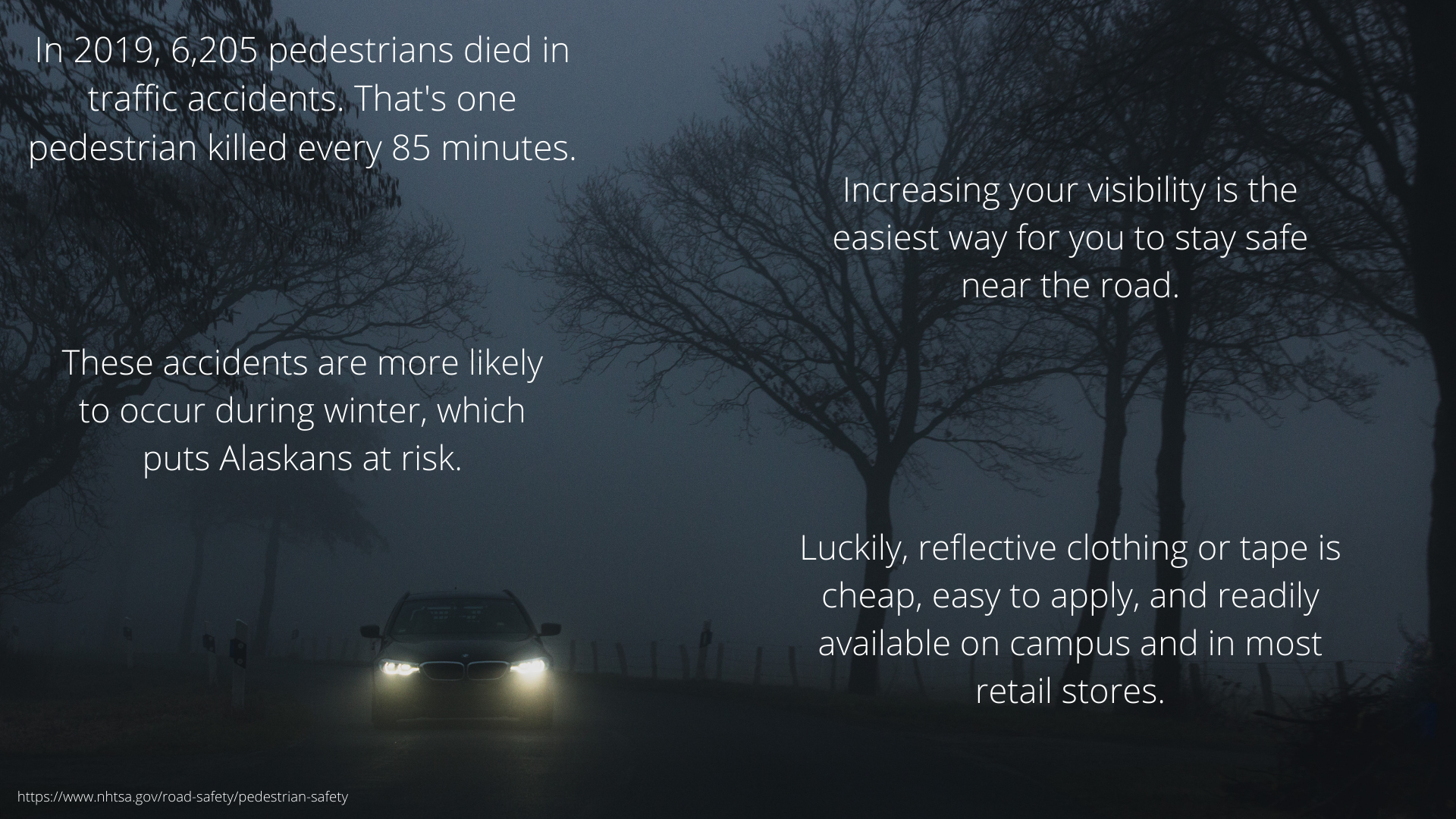11 Applications of the Extended Parallel Process Model
Alejandra Salazar, Auston L. Vreeland, Amber K. Worthington, & Parker Yeates*
*Authors names are listed in alphabetical order; all authors contributed equally to this chapter
Fear appeals, specifically the Extended Parallel Process Model (Witte, 1992), are explained in detail in Chapter 10. Of note, the Extended Parallel Process Model is only appropriate to use when the target audience has a high perception of efficacy already or when it is possible to increase efficacy with message content.
The Extended Parallel Process Model can be used to design messages to try to persuade college students to drink adequate amounts of water, take a vitamin D supplement, and wear reflective clothing. Examples on these topics are provided below by Alejandra Salazar, Auston L. Vreeland, and Parker Yeates, respectively. The authors felt that their intended audience (college students) would have preexisting high efficacy to engage in the recommended behaviors in these examples, thus making fear an appropriate persuasive tool. Message content related to response and self-efficacy are of course included to reinforce high perceptions of efficacy.
Example by Alejandra Salazar

The Extended Parallel Process Model can be used to persuade college students to drink adequate amounts of water. A persuasive fear appeal message would need to influence students’ perceptions of threat and efficacy.
Perceptions of threat include perceived severity and perceived susceptibility. The example message above states that “75% of Americans are chronically dehydrated” and that dehydration can lead to “dry lips & skin, nausea, fatigue, and feeling dizzy, irritable, or tired.” This message content specifically references the magnitude of harm and negative consequences of the health threat, which can increase perceived severity.
The example message also specifically references that dehydration impacts “Americans” and, in particular, “college students who deal with busy schedules.” This message content specifically references the likelihood that college students in the United States of America could experience the negative consequences of the health threat, which can increase perceived susceptibility.
Perceptions of efficacy include response efficacy and self-efficacy. The example message above states that “drinking at least 11 cups of water a day can keep dehydration away.” This explicitly states that the recommended behavior, drinking water, will prevent the health threat, which can increase perceived response efficacy.
The example message above also provides strategies to make enacting the recommended behavior, drinking 11 cups of water, easier. This includes the suggestion to buy a reusable water bottle, to refill the water bottle at convenient locations across campus, and to keep track of water consumption using a free app. All of this information can help increase the college students’ beliefs that drinking water would be easy to implement, thus potentially increasing perceived self-efficacy.
Example by Auston L. Vreeland

The Extended Parallel Process Model can be used to persuade college students in Alaska to take a Vitamin D supplement. A persuasive fear appeal message would need to influence students’ perceptions of threat and efficacy.
Perceptions of threat include perceived severity and perceived susceptibility. The example message above states that “Vitamin D deficiency can severely impact mental health and lead to seasonal affective disorder, mood changes, and depression.” This message content specifically references the magnitude of harm and negative consequences of the health threat, which can increase perceived severity.
The example message also specifically states that “Alaskans are at risk of a Vitamin D deficiency due to lack of sunlight during the winter months.” This message content specifically references the likelihood that college students in Alaska could experience the negative consequences of the health threat, which can increase perceived susceptibility.
Perceptions of efficacy include response efficacy and self-efficacy. The example message above states that “One of the most effective and easiest ways to prevent and treat Vitamin D deficiency is by taking a Vitamin D supplement.” This explicitly states that the recommended behavior, taking a Vitamin D supplement, will prevent the health threat, which can increase perceived response efficacy.
The example message above also states that “These supplements can be found at your local grocery store or online.” This can help increase the Alaskan students’ beliefs that taking a Vitamin D supplement would be easy to implement, thus potentially increasing perceived self-efficacy.
Example by Parker Yeates

The Extended Parallel Process Model can be used to persuade college students to wear reflective clothing when it is dark outside. A persuasive fear appeal message would need to influence students’ perceptions of threat and efficacy.
Perceptions of threat include perceived severity and perceived susceptibility. The example message above states that “In 2019, 6,205 pedestrians died in traffic accidents. That’s one pedestrian killed every 85 minutes.” This message content specifically references the magnitude of harm and negative consequences of the health threat, which can increase perceived severity.
The example message also specifically notes that “These accidents are more likely to occur during winter, which puts Alaskans at risk.” This message content specifically references the likelihood that those in Alaska could experience the negative consequences of the health threat, which can increase perceived susceptibility.
Perceptions of efficacy include response efficacy and self-efficacy. The example message above states that “Increasing your visibility is the easiest way for you to stay safe near the road.” This explicitly states that the recommended behavior, increasing your visibility, will prevent the health threat, which can increase perceived response efficacy.
The example message above also notes that “reflective clothing or tape is cheap, easy to apply, and readily available on campus and in most retail stores.” This information can help increase the Alaskan students’ beliefs that increasing their visibility by applying reflective tape or purchasing reflective clothing would be easy to implement, thus potentially increasing perceived self-efficacy.

